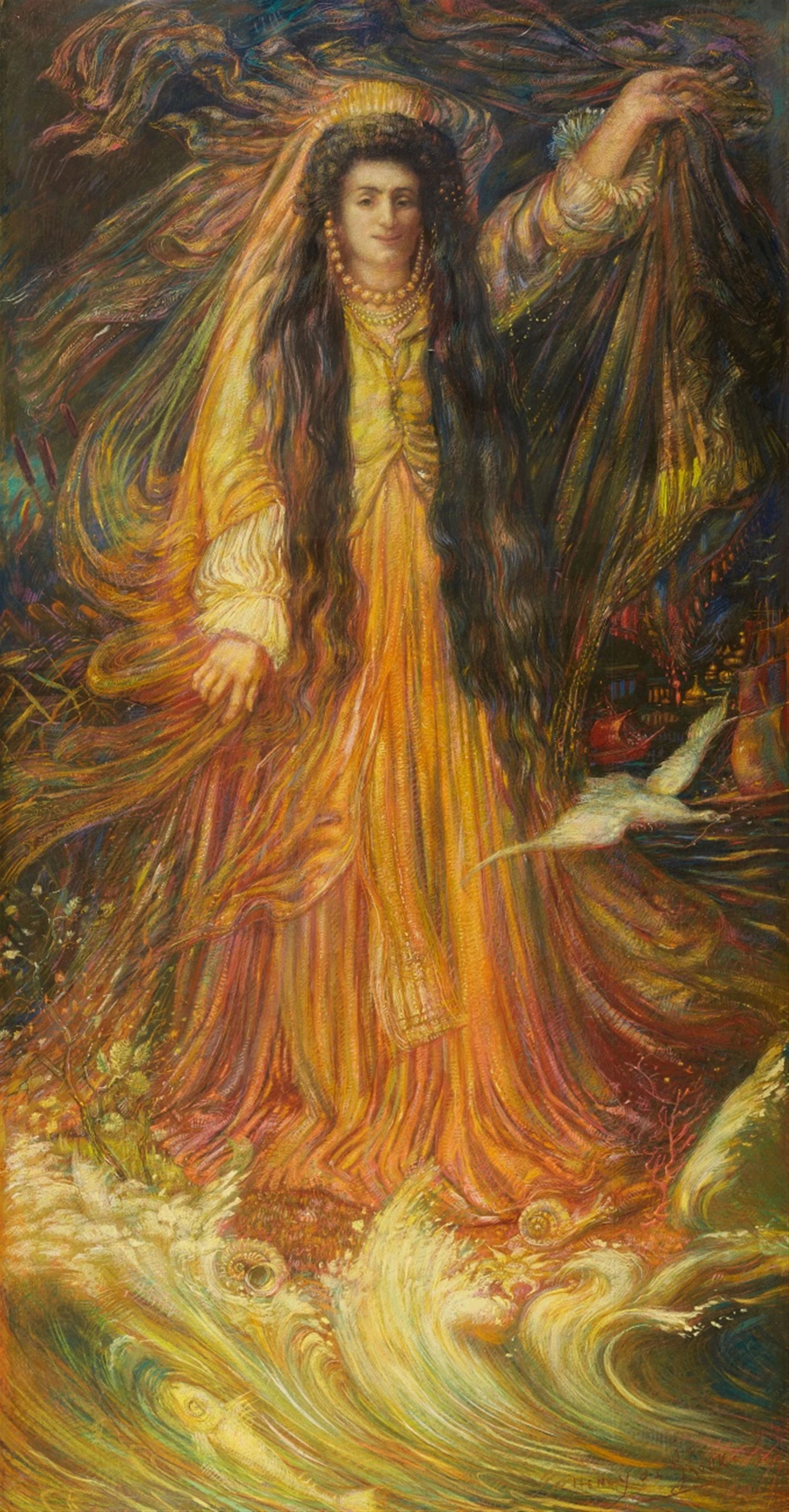Henry de Groux
Senta - aus Richard Wagners "Der Fliegende Holländer"
Pastellkreiden auf Papier. 285 x 147 cm.
Unter Glas gerahmt..
Signiert unten rechts: Henry de Groux.
An opulent pastel, this "drawing" by Henry de Groux is an exemplary work of Belgian Symbolism, both in form and content. The artists of this epoch attached great importance to a refined, elaborate technique and a complex composition - perhaps even in deliberate contrast to the rapidly executed plain-air paintings of the Impressionists. At the same time, this work is an incunabulum of Symbolism in terms of its content and the message it conveys. Not only for de Groux, but especially for him, Richard Wagner's stage dramas and the pathos of his mystical figures with their dark dreams of death and redemption, were an important source of inspiration.
This monumental and detailed drawing refers to Wagner's opera "The Flying Dutchman". The female figure in the painting is Senta, whose self-imposed destiny was to redeem the doomed Dutchman. He was only allowed a short stay on land every seven years. If he found a woman who would remain faithful to him, he and his crew would be released from this spell. After their first encounter, Senta dreams and feels she has to redeem the damned, but the story does not end well. The Dutchman doubts Senta's faith and climbs aboard his ship. Senta calls after him "Treu bis zum Tod (Faithful to the death)" and throws herself into the sea. Instantly, the Dutchman's ship sinks and is redeemed. In a later correction of the finale, the Dutchman and Senta are seen rising from the sea to heaven to the "Erlösungsmotiv“, or the "theme of redemption".
Provenienz
Aus der Sammlung von SKH Prince Charles de Belgique.
Ausstellung
2001 / 2002: Les passions de l´Ame, les symbolistes belges, Museum of Fine Arts Budapest (S. 52, Nr. 9). - 2005 / 2006: Le Symbolisme en Belgique, Bunkamura Museum Tokio. Onomichi Prefectural Museum of Art, Kagoshima City Museum, Fukui Fine Arts Museum (S. 125, Nr. 72). - 2019: Henry de Groux (1866 - 1930, maître de la démesure, Musée Felicien Rops, Namur (S. 6, Nr. 3).

